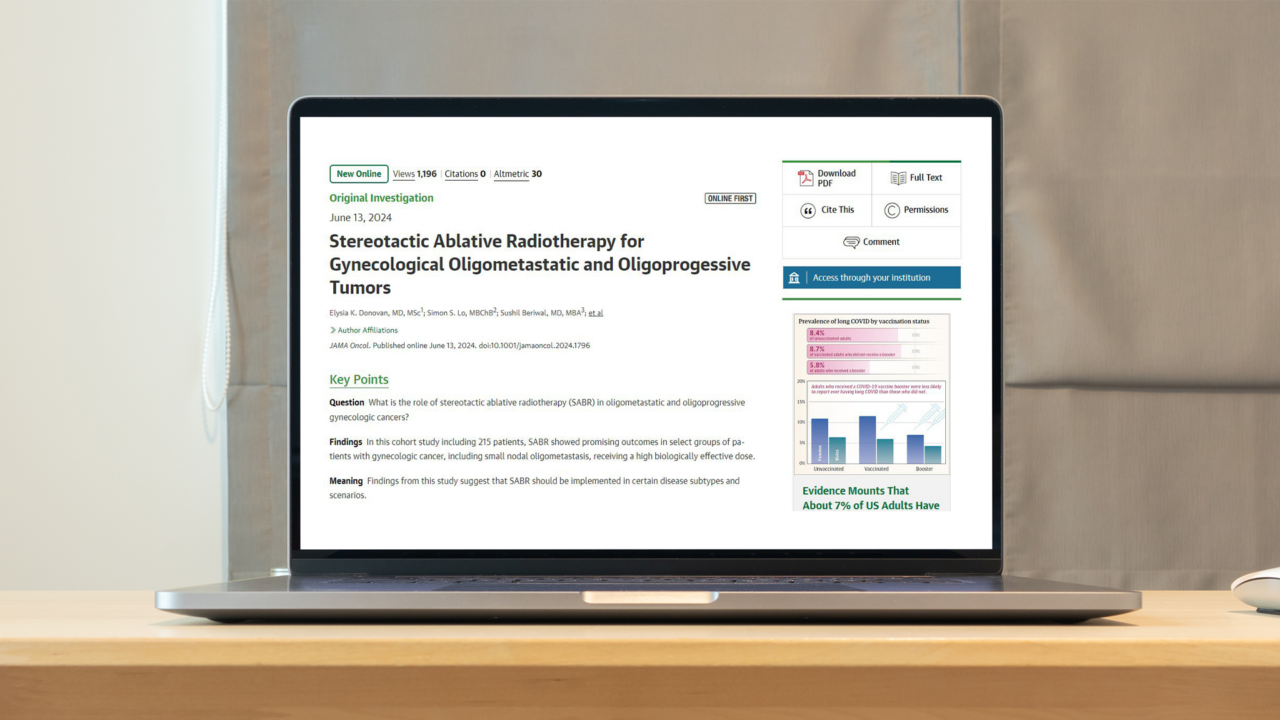
Andres Rodriguez Mignola: SBRT in Oligometastatic Disease in Gynecologic Tumors – A Therapeutic Option?
Andres Rodriguez Mignola, Radiation Oncologist at Ángel Roffo Institute of Oncology, shared a post on LinkedIn:
“SBRT in Oligometastatic Disease in Gynecologic Tumors: A Therapeutic Option?
The concept of oligometastasis and oligoprogression, introduced by Hellman and Wechselbaum in 1995, challenges us to understand metastatic disease from a different biological perspective, recognizing that not all metastatic patients will experience the same progression.
The traditional approach of initiating a new line of systemic treatment upon recurrence or progression has been reconsidered in light of this new understanding and the development of novel local ablative techniques such as SRS and SBRT. These techniques enable targeted treatment with good local control rates, potentially delaying the initiation of a new systemic therapy.
Numerous studies have been conducted to investigate these indications, most of them Phase II trials, with one of the pivotal studies being the SABR-COMET trial.
In this retrospective pooled analysis, patients with oligometastatic and oligoprogressive gynecologic cancers were treated with SBRT in institutions from Canada and the US.
Results:
- 215 patients
- Median age at primary diagnosis was 59 (range 23-86) years.
- Median follow-up was 18.5 months.
- Primary sites: endometrium (n = 107), ovary (n = 64), cervix (n = 30), and vulva or vagina (n = 14).
- Local cumulative incidence of recurrence was 13.7% (95% CI, 9.4-18.9) at 1 year and 18.5% (95% CI, 13.2-24.5) at 5 years.
- Distant cumulative incidence of recurrence was 48.5% (95% CI, 41.4-55.1) at 1 year and 73.1% (95% CI, 66.0-79.0) at 5 years.
- Overall survival (OS) was 75.7% (95% CI, 69.2-81.1) at 1 year and 33.1% (95% CI, 25.3-41.1) at 5 years.
- The median chemotherapy-free survival (CFS) was 21.7 months (95% CI, 15.4-29.9).
- OS and CFS were significantly associated with lesion size.
Conclusion:
In this study, SABR demonstrated excellent local control with minimal toxic effects in a large patient cohort, with some patients achieving durable distant control and overall survival. It may be possible to delay the initiation of chemotherapy in select patient subtypes, thereby reducing associated toxic effects. Prospective multicenter trials will be critical to identify which characteristics confer the greatest benefit from SABR and to determine the optimal timing for implementing SABR alongside other oncologic treatments.”
-
Challenging the Status Quo in Colorectal Cancer 2024
December 6-8, 2024
-
ESMO 2024 Congress
September 13-17, 2024
-
ASCO Annual Meeting
May 30 - June 4, 2024
-
Yvonne Award 2024
May 31, 2024
-
OncoThon 2024, Online
Feb. 15, 2024
-
Global Summit on War & Cancer 2023, Online
Dec. 14-16, 2023
